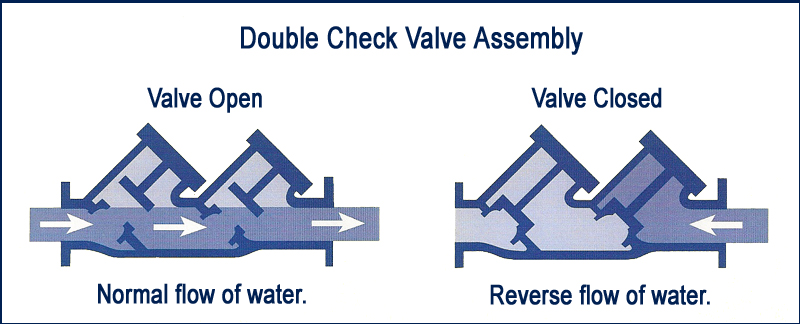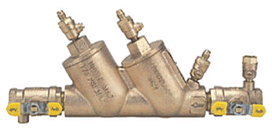Backflow
Click HERE for the entire list of New York State certified backflow testers.
What is Backflow?
Backflow is a hazardous situation that can threaten the safety of the public water supply. The danger arises when there is a connection to the water source where water can be drawn back into the pipes. For example, if the water pressure suddenly drops, any water that has puddled near the sprinkler heads, where fertilizers are often present, could be siphoned back into the water supply that the public relies on for drinking. The same thing could happen if a hose is left dangling in a swimming pool or fish tank.


A decrease in water pressure is not uncommon. If a hydrant is being used nearby to extinguish a fire or a nearby water main has ruptured, it will cause the pressure to drop suddenly.
Backflow prevention devices must be used to stop such contaminants from potentially entering the public water system.
New York State law mandates the installation of backflow devices on all appliances attached to the public water system like underground irrigation systems, swimming pools, dark rooms, water cooled refrigeration and solar heating systems. The devices must be tested annually by a certified tester, and the results filed with the Bethpage Water District.
Backflow Frequently Asked Questions
Q: What is a cross-connection?
A: It is a situation where there is a direct arrangement of a piping line, which allows the potable water supply to be connected to a line, which may introduce a contaminant.
Q: What is the most common form of a cross-connection?
A: Ironically, the simple garden hose is the most common offender as it can be easily connected to the potable water supply and used for a variety of potentially dangerous applications such as filling swimming pools or fertilizing the annuals.
Q: Who is responsible for determining whether or not a device is needed?
A: The Bethpage Water District is required to determine the degree of hazard that a facility may pose to its public water supply system and will decide on the installation and maintenance of an acceptable backflow prevention containment device. Ultimately, the customer has the primary responsibility of preventing contaminants from entering the potable water supply.
Q: Why does the Bethpage Water District have a cross-connection program?
A: As mandated by state law; “the supplier of water shall protect the public water system by containing potential contamination within the premises by requiring backflow prevention devices installed and tested.”
Q: How often does the device need to be tested?
A: The law requires that all installed backflow services be inspected annually by a certified backflow tester. A list of qualified testers may be obtained from the Nassau County Health Department at (516) 571-3323.
Q: Why do I need a backflow prevention device?
A: The Bethpage Water District requires the devices to protect the public water supply against contamination.
Q: Are there different types of backflow prevention devices?
A: There are many types of devices such as Pressure Vacuum Breakers (PVB) or Reduced Pressure Zone Devices (RPZ), but the most common type for residential applications is a Double Check Valve (DCV), which is required for residences with underground sprinkler systems. It is designed to contain water within the sprinkler system. Pressure Vacuum Breakers (PVB) are not accepted in Bethpage Water District.